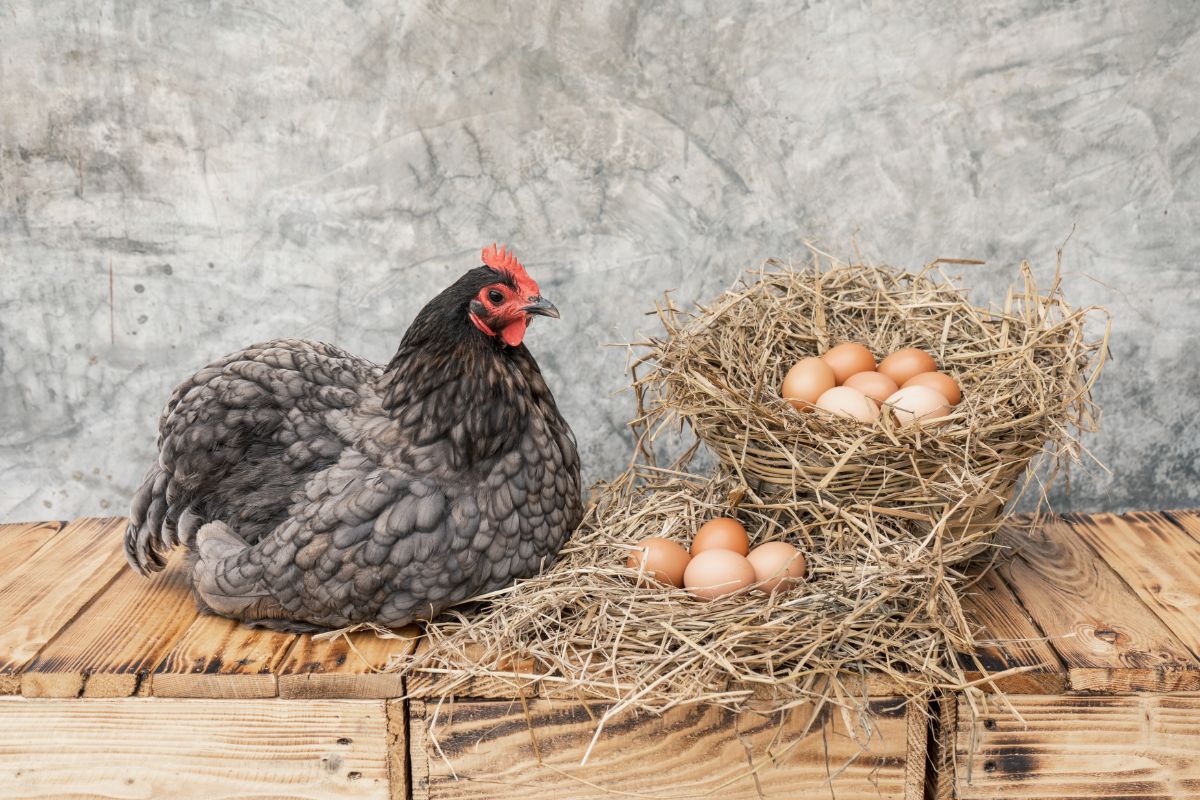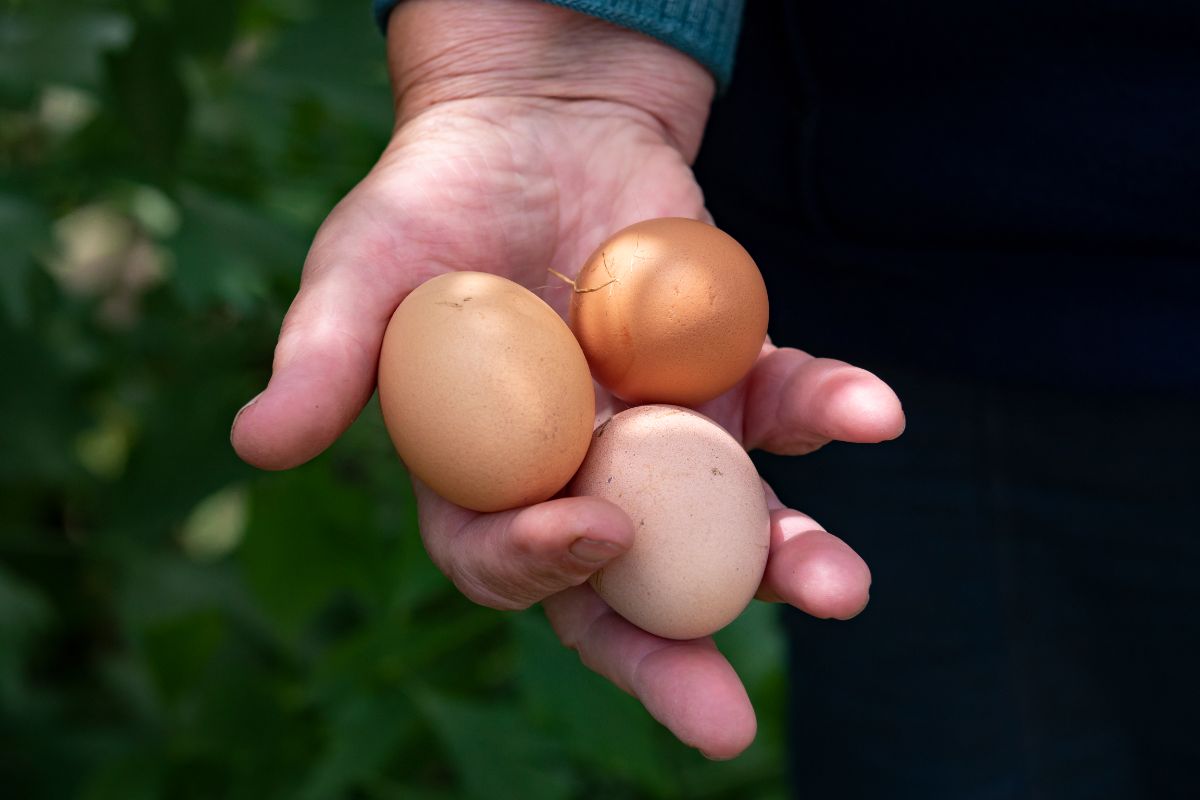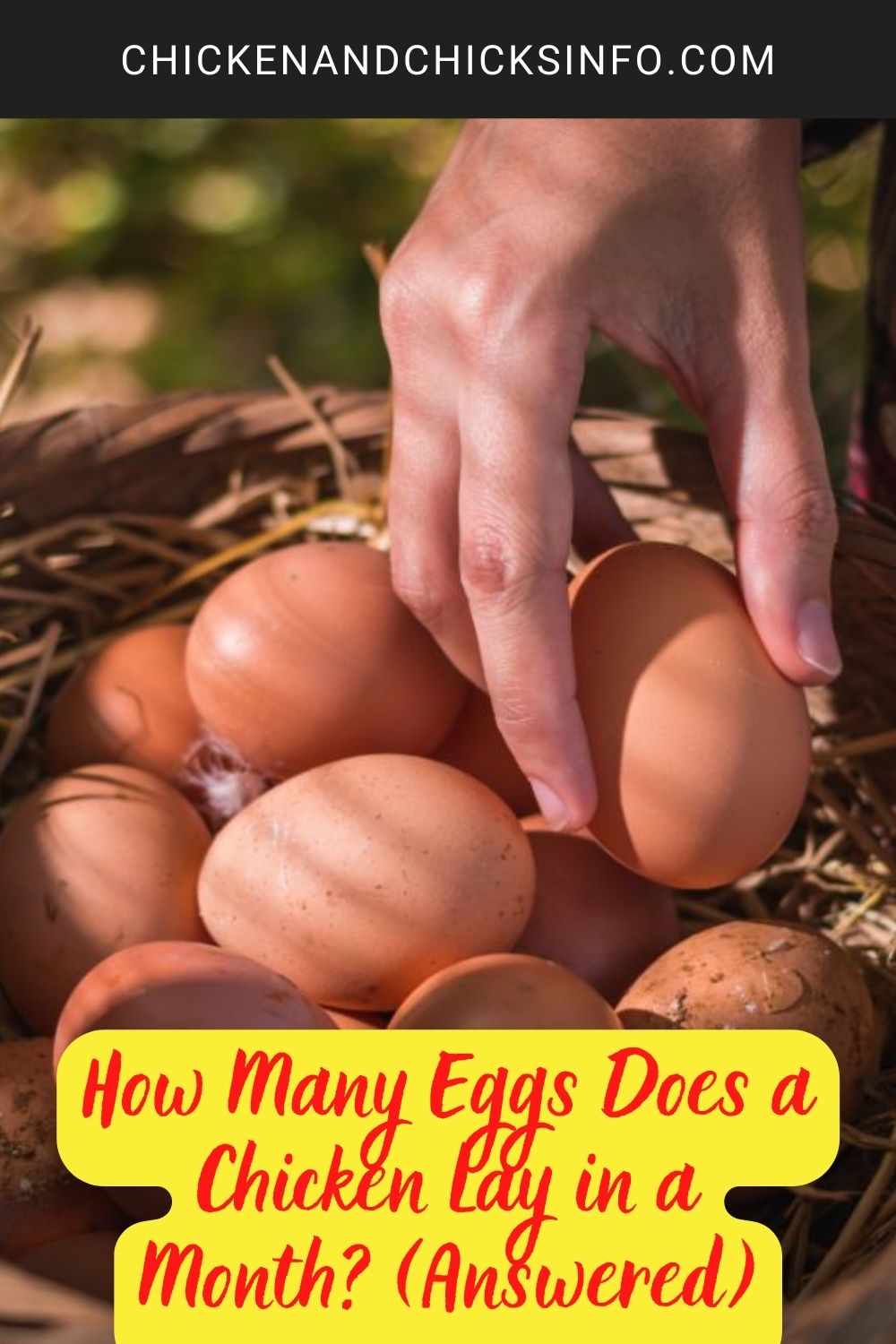
The number of eggs a chicken will lay in a month depends on the breed of chicken, as well as the environmental conditions a hen is living in.
To give you a general idea, the most prolific egg-laying breeds like ISA Browns and Leghorns lay around 25 eggs per month.
While some ornamental backyard chicken breeds lay much fewer. Silkies for example lay just 8-10 small eggs per month.
If you’re thinking about keeping backyard chickens for eggs, you should research the breed of chicken you’re going to keep carefully.
Jump to:
How Many Eggs a Hen Can Lay in a Month?
The most prolific egg-laying chickens can lay around 25 eggs per month. It depends on how many days are in the month and some other factors to give an accurate answer.
If I tell you that it takes about 24-26 hours for the process of forming an egg to go from start to finish, you’ll understand that a hen can only lay 1 egg per day at most.
There will also be days where hens do not lay eggs.
The process of egg-laying starts when sunlight activates something called the photosensitive gland located near a hen’s eye.
Obviously, this can only happen when there is an availability of sunlight. This can also be manufactured with artificial light, as is done with some egg farming operations.
The general health and wellbeing of a hen also contribute to how often they will lay eggs, as well as the quality of the eggs.
The basic requirements of hens to lay eggs at their best are:
- Good quality feed and nutrition with the right amount of protein
- 12 hours or so of good sunlight
- Stress-free living conditions
If you can provide all of the above - which isn’t a lot - whatever your hen’s peak laying ability is, they should be able to achieve.
Related - More on how to get your chickens to lay bigger eggs here.
How Many Eggs Does a Chicken Lay in a Week?

Taking into account what is required for a hen to lay eggs at their best, the number of eggs you can expect on the high end is 5-6 eggs per week.
This is the number of eggs large commercial egg-farming operations are able to achieve. Although, there is some controversy around the practices a lot of large egg farms use.
It’s up to you where you get your eggs from. But, personally, I only buy eggs from smaller, family-operated egg farms where hens are allowed to roam freely.
The eggs cost a little more, but I want to know that the hens are living their best lives. Plus, eggs from free-range or organic hens taste a lot better than eggs from caged hens!
How Many Months per Year Do Chickens Lay Eggs?
Free-range hens living in natural conditions will not lay eggs all year round.
Because hens depend on good quality daylight to lay eggs, most stop laying in the winter months when the days are much shorter.
Again, this is heavily dependent on the breed of chicken. Some are more likely to lay eggs in the winter months than others.
Commercial egg farming operations get around this by providing artificial light and manufacturing the conditions needed to keep their hens laying eggs.
Hens also molt once a year. Molting is the process of shedding old feathers and re-growing them.
This usually takes place when the days are starting to get shorter. It ties in with egg production slowing down as growing feathers requires a large amount of protein and other nutrients.
Related - What you can do to help hens lay more eggs during winter.
Do Hens Lay Fewer Eggs as They Get Older?

Hens do lay fewer eggs as they age, and their egg production tapers off quite quickly year on year.
Looking at backyard or free-range hens, most mature and start laying eggs around 18-20 weeks of age.
Although this depends on the breed and some other factors.
If we take their first full year of laying eggs as 100% capacity, it’s generally estimated that in year two a hen will lay at around 80%.
This then tapers off as follows:
- Year 3 - 70%
- Year 4 - 60%
- Year 5 - 50%
- Year 6 - 45%
- Year 7 - 35%
This means if your hens are laying around 20 eggs per month in their first year, you can expect that number to be around 10 per month by the time they’re five years old.
If you compare these numbers to battery hens or hens being kept in poor conditions in a commercial setting, those hens lay more in their first 1-2 years then taper off much faster.
In fact, most battery hens are only kept for one to one and a half years before being retired.
Related - A closer look at when bantams and silkies start laying eggs.
In Summary
The number of eggs a chicken lays depends on the breed, age, and environmental conditions.
Generally speaking, however, it takes a hen about 24-26 hours to produce an egg. So, the most you can expect from any hen is one a day with some overlap every few days.
The bottom line is that chickens lay fewer eggs in a backyard setting or when they’re given the freedom to roam than they do in a commercial setting.
But fresh eggs from a backyard hen fed on a high-quality diet taste so much better, it’s definitely worth it!





